Jonayet Miah
Improving Cardiovascular Disease Prediction Through Comparative Analysis of Machine Learning Models: A Case Study on Myocardial Infarction
Nov 01, 2023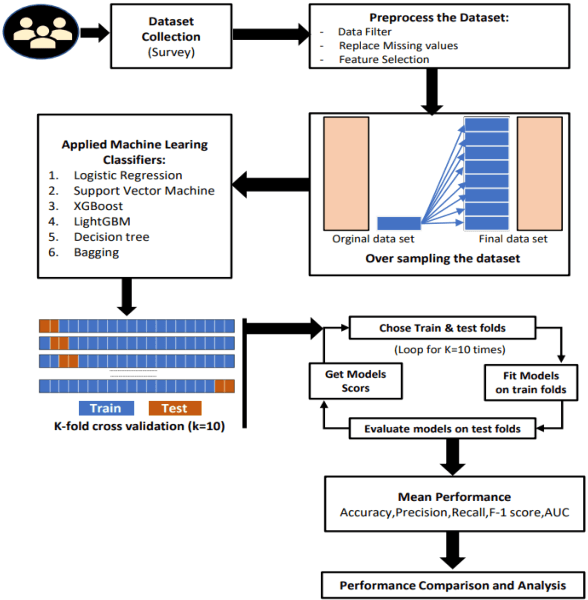
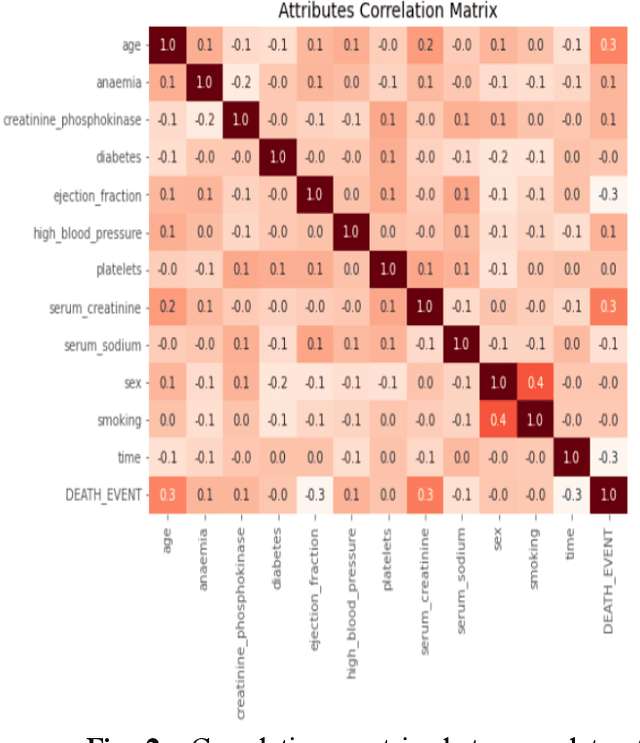
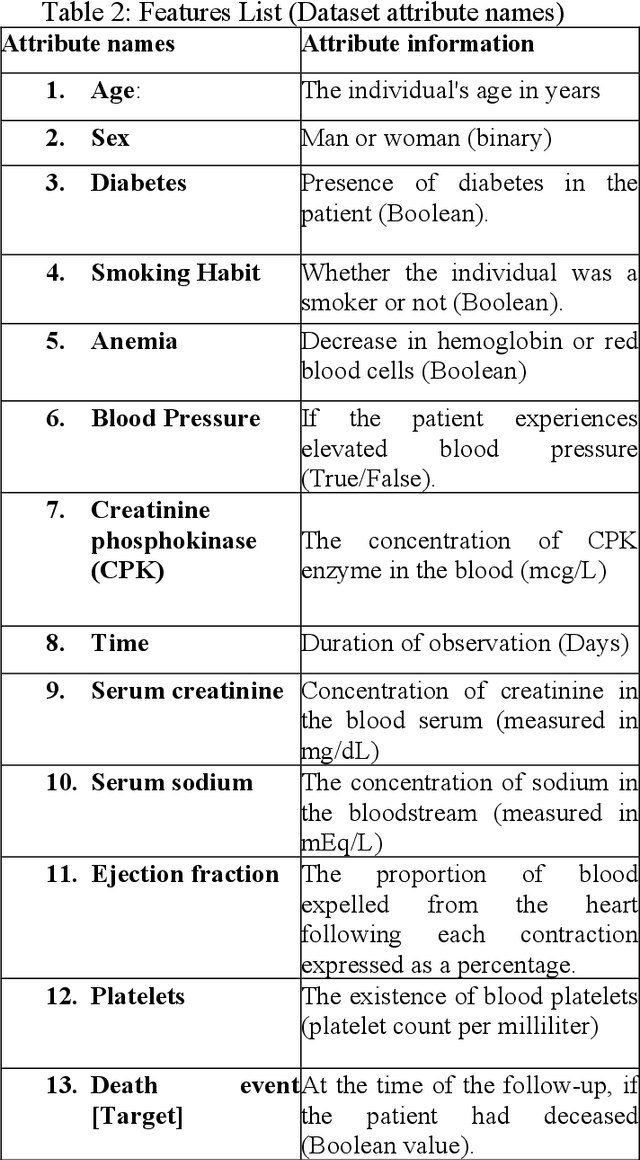
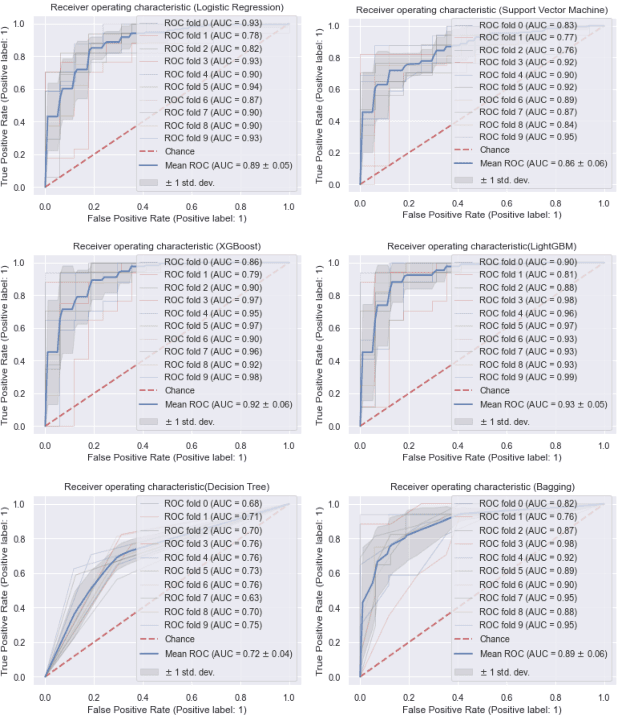
Abstract:Cardiovascular disease remains a leading cause of mortality in the contemporary world. Its association with smoking, elevated blood pressure, and cholesterol levels underscores the significance of these risk factors. This study addresses the challenge of predicting myocardial illness, a formidable task in medical research. Accurate predictions are pivotal for refining healthcare strategies. This investigation conducts a comparative analysis of six distinct machine learning models: Logistic Regression, Support Vector Machine, Decision Tree, Bagging, XGBoost, and LightGBM. The attained outcomes exhibit promise, with accuracy rates as follows: Logistic Regression (81.00%), Support Vector Machine (75.01%), XGBoost (92.72%), LightGBM (90.60%), Decision Tree (82.30%), and Bagging (83.01%). Notably, XGBoost emerges as the top-performing model. These findings underscore its potential to enhance predictive precision for coronary infarction. As the prevalence of cardiovascular risk factors persists, incorporating advanced machine learning techniques holds the potential to refine proactive medical interventions.
Generative AI Model for Artistic Style Transfer Using Convolutional Neural Networks
Oct 30, 2023Abstract:Artistic style transfer, a captivating application of generative artificial intelligence, involves fusing the content of one image with the artistic style of another to create unique visual compositions. This paper presents a comprehensive overview of a novel technique for style transfer using Convolutional Neural Networks (CNNs). By leveraging deep image representations learned by CNNs, we demonstrate how to separate and manipulate image content and style, enabling the synthesis of high-quality images that combine content and style in a harmonious manner. We describe the methodology, including content and style representations, loss computation, and optimization, and showcase experimental results highlighting the effectiveness and versatility of the approach across different styles and content
Advancing Brain Tumor Detection: A Thorough Investigation of CNNs, Clustering, and SoftMax Classification in the Analysis of MRI Images
Oct 26, 2023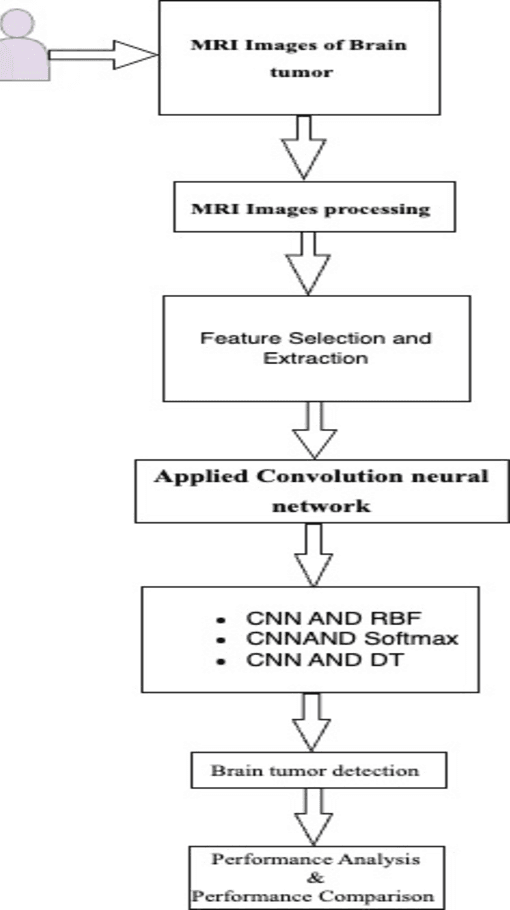
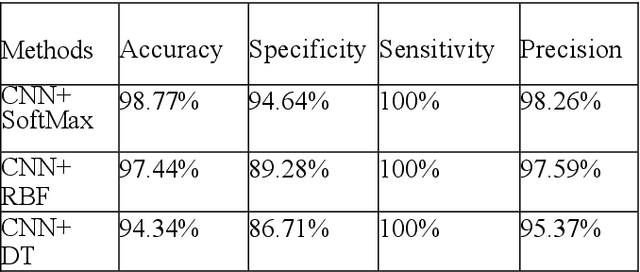
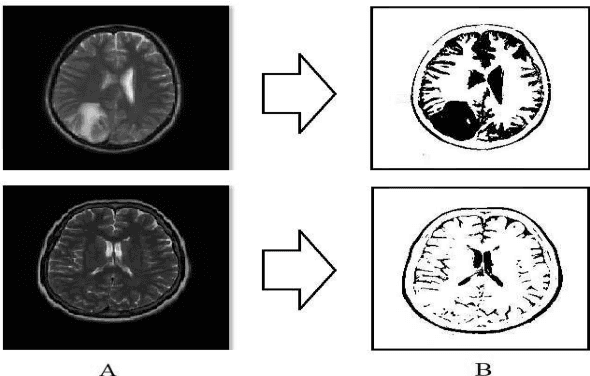
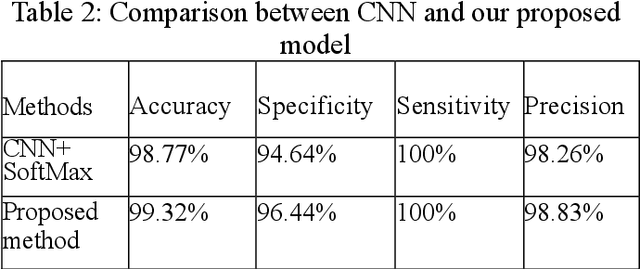
Abstract:Brain tumors pose a significant global health challenge due to their high prevalence and mortality rates across all age groups. Detecting brain tumors at an early stage is crucial for effective treatment and patient outcomes. This study presents a comprehensive investigation into the use of Convolutional Neural Networks (CNNs) for brain tumor detection using Magnetic Resonance Imaging (MRI) images. The dataset, consisting of MRI scans from both healthy individuals and patients with brain tumors, was processed and fed into the CNN architecture. The SoftMax Fully Connected layer was employed to classify the images, achieving an accuracy of 98%. To evaluate the CNN's performance, two other classifiers, Radial Basis Function (RBF) and Decision Tree (DT), were utilized, yielding accuracy rates of 98.24% and 95.64%, respectively. The study also introduced a clustering method for feature extraction, improving CNN's accuracy. Sensitivity, Specificity, and Precision were employed alongside accuracy to comprehensively evaluate the network's performance. Notably, the SoftMax classifier demonstrated the highest accuracy among the categorizers, achieving 99.52% accuracy on test data. The presented research contributes to the growing field of deep learning in medical image analysis. The combination of CNNs and MRI data offers a promising tool for accurately detecting brain tumors, with potential implications for early diagnosis and improved patient care.
Improving Traffic Density Forecasting in Intelligent Transportation Systems Using Gated Graph Neural Networks
Oct 26, 2023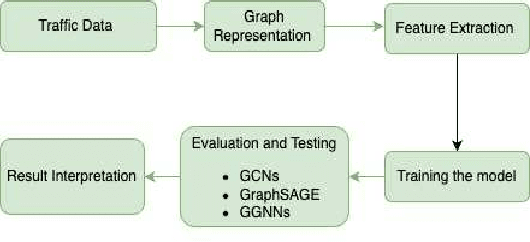
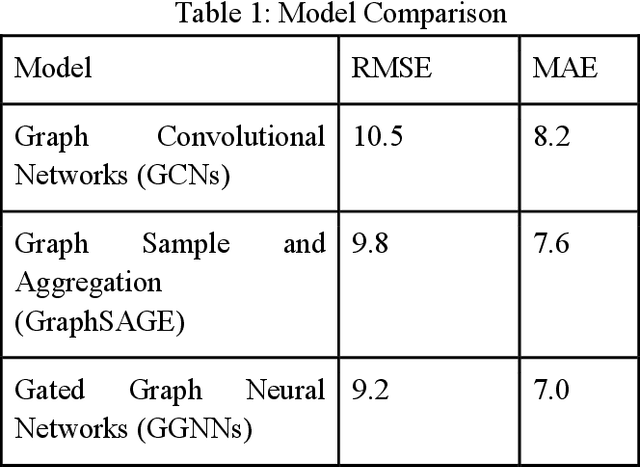
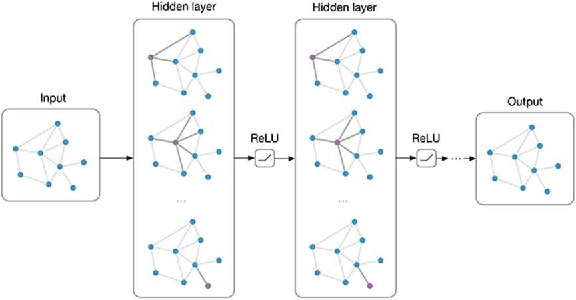
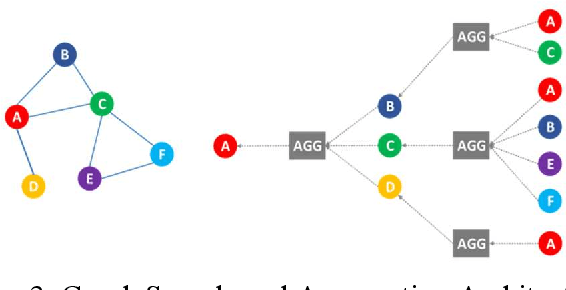
Abstract:This study delves into the application of graph neural networks in the realm of traffic forecasting, a crucial facet of intelligent transportation systems. Accurate traffic predictions are vital for functions like trip planning, traffic control, and vehicle routing in such systems. Three prominent GNN architectures Graph Convolutional Networks (Graph Sample and Aggregation) and Gated Graph Neural Networks are explored within the context of traffic prediction. Each architecture's methodology is thoroughly examined, including layer configurations, activation functions,and hyperparameters. The primary goal is to minimize prediction errors, with GGNNs emerging as the most effective choice among the three models. The research outlines outcomes for each architecture, elucidating their predictive performance through root mean squared error and mean absolute error (MAE). Hypothetical results reveal intriguing insights: GCNs display an RMSE of 9.10 and an MAE of 8.00, while GraphSAGE shows improvement with an RMSE of 8.3 and an MAE of 7.5. Gated Graph Neural Networks (GGNNs) exhibit the lowest RMSE at 9.15 and an impressive MAE of 7.1, positioning them as the frontrunner.
Retail Demand Forecasting: A Comparative Study for Multivariate Time Series
Aug 23, 2023Abstract:Accurate demand forecasting in the retail industry is a critical determinant of financial performance and supply chain efficiency. As global markets become increasingly interconnected, businesses are turning towards advanced prediction models to gain a competitive edge. However, existing literature mostly focuses on historical sales data and ignores the vital influence of macroeconomic conditions on consumer spending behavior. In this study, we bridge this gap by enriching time series data of customer demand with macroeconomic variables, such as the Consumer Price Index (CPI), Index of Consumer Sentiment (ICS), and unemployment rates. Leveraging this comprehensive dataset, we develop and compare various regression and machine learning models to predict retail demand accurately.
MHfit: Mobile Health Data for Predicting Athletics Fitness Using Machine Learning
Apr 26, 2023Abstract:Mobile phones and other electronic gadgets or devices have aided in collecting data without the need for data entry. This paper will specifically focus on Mobile health data. Mobile health data use mobile devices to gather clinical health data and track patient vitals in real-time. Our study is aimed to give decisions for small or big sports teams on whether one athlete good fit or not for a particular game with the compare several machine learning algorithms to predict human behavior and health using the data collected from mobile devices and sensors placed on patients. In this study, we have obtained the dataset from a similar study done on mhealth. The dataset contains vital signs recordings of ten volunteers from different backgrounds. They had to perform several physical activities with a sensor placed on their bodies. Our study used 5 machine learning algorithms (XGBoost, Naive Bayes, Decision Tree, Random Forest, and Logistic Regression) to analyze and predict human health behavior. XGBoost performed better compared to the other machine learning algorithms and achieved 95.2% accuracy, 99.5% in sensitivity, 99.5% in specificity, and 99.66% in F1 score. Our research indicated a promising future in mhealth being used to predict human behavior and further research and exploration need to be done for it to be available for commercial use specifically in the sports industry.
 Add to Chrome
Add to Chrome Add to Firefox
Add to Firefox Add to Edge
Add to Edge